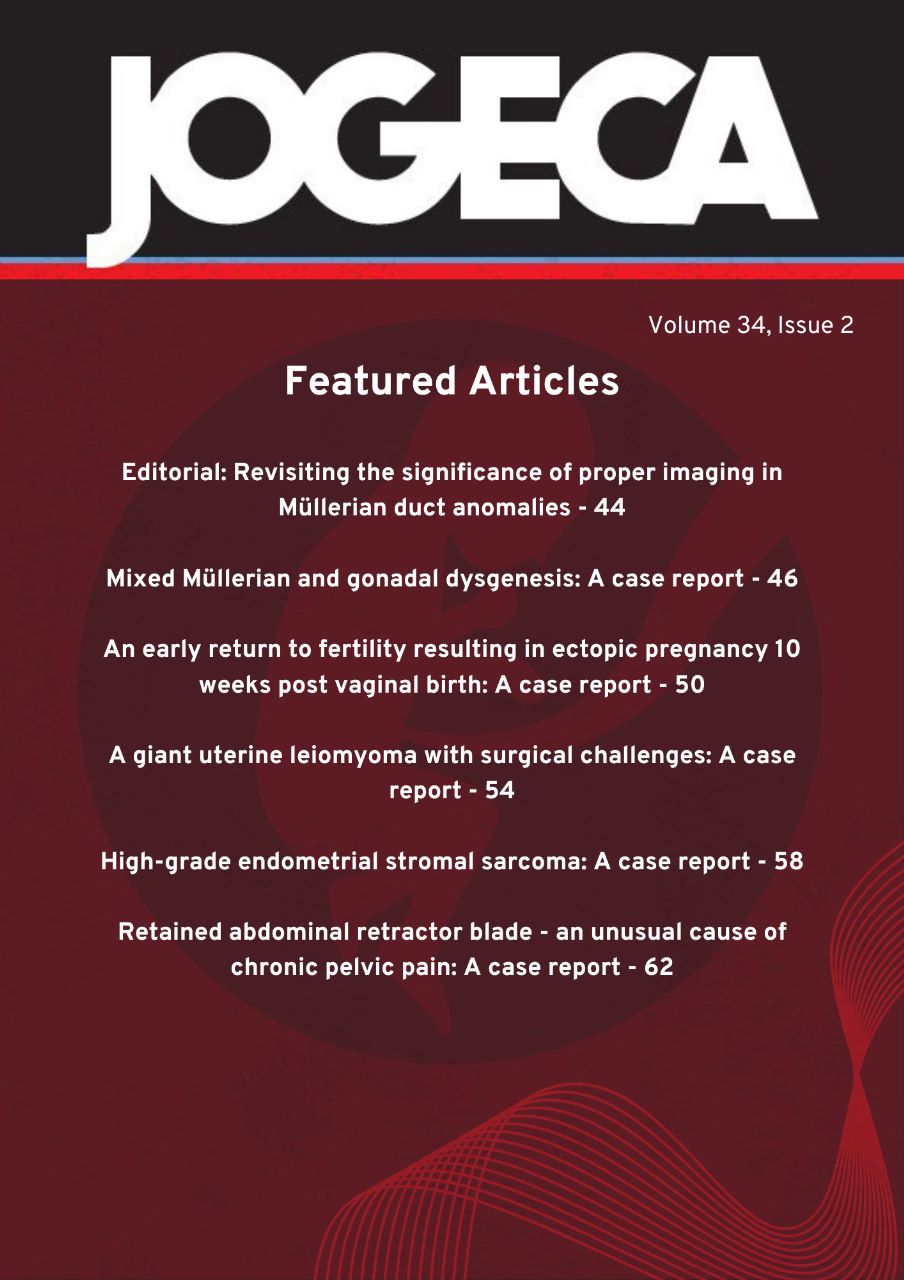Effect of a Structured Integrated Obstetric Triage Model (SIOTEL) on Patient Waiting time in Maternity Units in Kiambu County – A Quasi Experimental Study
DOI:
https://doi.org/10.59692/jogeca.v36i1.143Abstract
Background: Perinatal mortality and morbidity remains high in Kenya over the years, and this has been attributed to the Three Delays, the third focusing on access to care once the client is in the health facility. Structured frameworks for obstetric triage have been shown to improve perinatal outcomes across the globe. In Kenya, anecdotal evidence suggests that there is no formal framework for conducting obstetric triage in public facilities. This study sought to assess the effect of a Structured Integrated Obstetric Triage Model (SIOTEL) on patient waiting time in maternity units of Kiambu Referral Hospitals.
Methods: A quasi experimental design was applied in the study. The intervention facility was Kiambu County Referral Hospital and control facility was Thika Level 5 Hospital. Study population included files of patients admitted in the labour wards. The intervention (SIOTEL) was a 3-scale modified Obstetric Triage Acuity Scale, a client assessment tool that was used to conduct obstetric triage. A baseline survey was conducted followed by development, validation and implementation of the tool, then an end line survey conducted to assess effect of the model on waiting time. Quantitative data was analyzed using STATA and presented in tables and graphs. T-statistic was used to test for significance of mean waiting time in the two facilities.
Results: A total of 455 files were reviewed, 231 at baseline and 224 at endline survey. The mean client waiting time at baseline was 113.19 and 124.91 minutes in the intervention and control facilities respectively. At endline, the mean waiting time was 57.46 minutes in the intervention facility and 112.92 minutes in the control facility. Findings thus revealed a significant effect of the SIOTEL on client waiting time in the intervention facility (t-3.77;p value 0.00) compared to the control facility (t-0.78; p value 0.44)
Conclusions and recommendations: The study concludes that implementation of structured models for obstetric triage contributes to reduction in client waiting time, and recommendations are made to adopt such models for triage in public facilities in Kenya
Downloads
Published
How to Cite
Issue
Section
Categories
License
Copyright (c) 2024 The Authors.

This work is licensed under a Creative Commons Attribution 4.0 International License.




